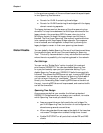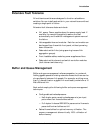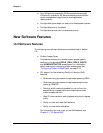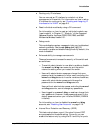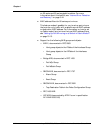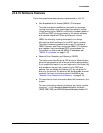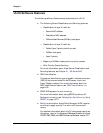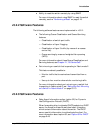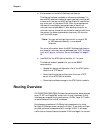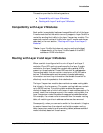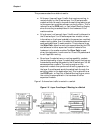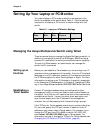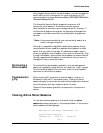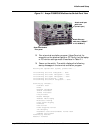
1-28 Avaya P550R, P580, P880, and P882 Multiservice Switch User Guide, v5.3.1
Chapter 1
■ Enhancement of the MAC Address Lock feature.
This feature has been available in all previous releases. If a
source MAC address is locked at a port (statically configured),
a frame with that source MAC will be filtered if received on
any other port on the same VLAN. With the enhancement,
the feature immediately generates traps to identify all
unknown source addresses. If, after sending a trap for an
unknown source, the switch continues to receive traffic from
the source, the feature generates a trap every 30 minutes
until the traffic stops.
* Note: You can set the trap timer within a range of 60
to 1800 seconds (default) in one second
intervals.
For more information about the MAC Address Lock feature
and traps for unknown source addresses, see “MAC Address
Lock and Traps for Unknown Source Addresses” on page 6-
24.
■ Load MIB for the ATM Uplink module, V1.1 or later.
This feature makes it possible for you to use SNMP
commands to:
— Upload the startup configuration file of the ATM Uplink
module to a TFTP server
— Download the startup configuration file from a TFTP
server to the ATM Uplink module.
— Download a software image to the ATM Uplink module.
Routing Overview
All P550R/P580/P880/P882 Multiservice switches can be configured
as an IP, IPX, and AppleTalk router with virtual interfaces. Virtual
interfaces are mapped to physical ports or VLANs. Layer 3 IP traffic
is routed between the virtual interfaces.
Ports become members of VLANs by being assigned or by rules.
Multiple VLANs can share a single trunk port. In contrast, multiple
physical ports can be associated with a single VLAN. In all cases,
traffic that arrives and leaves the same VLAN is bridged, not routed.



